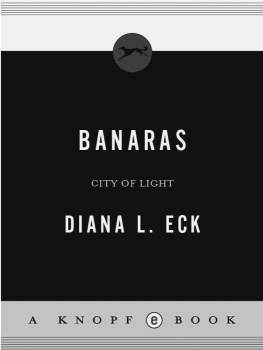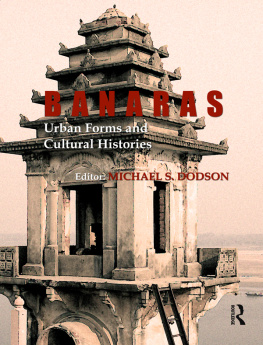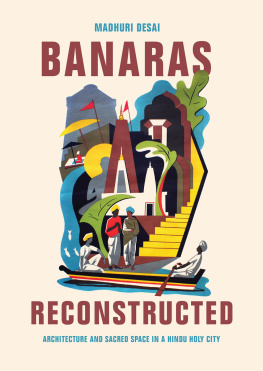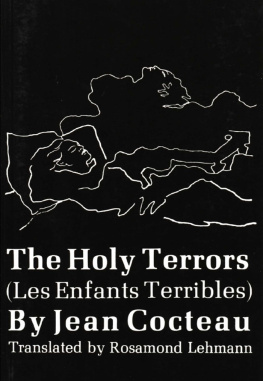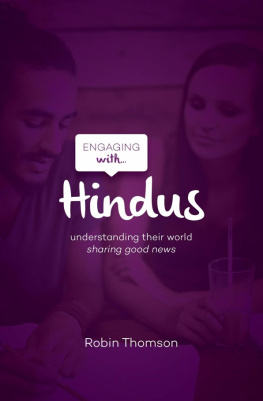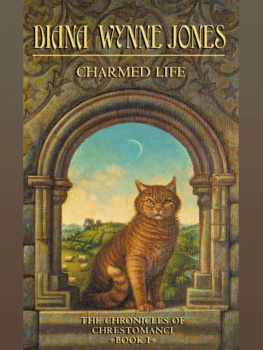Diana L. Eck - Banaras
Here you can read online Diana L. Eck - Banaras full text of the book (entire story) in english for free. Download pdf and epub, get meaning, cover and reviews about this ebook. year: 1998, publisher: Columbia University Press, genre: Detective and thriller. Description of the work, (preface) as well as reviews are available. Best literature library LitArk.com created for fans of good reading and offers a wide selection of genres:
Romance novel
Science fiction
Adventure
Detective
Science
History
Home and family
Prose
Art
Politics
Computer
Non-fiction
Religion
Business
Children
Humor
Choose a favorite category and find really read worthwhile books. Enjoy immersion in the world of imagination, feel the emotions of the characters or learn something new for yourself, make an fascinating discovery.
- Book:Banaras
- Author:
- Publisher:Columbia University Press
- Genre:
- Year:1998
- Rating:5 / 5
- Favourites:Add to favourites
- Your mark:
- 100
- 1
- 2
- 3
- 4
- 5
Banaras: summary, description and annotation
We offer to read an annotation, description, summary or preface (depends on what the author of the book "Banaras" wrote himself). If you haven't found the necessary information about the book — write in the comments, we will try to find it.
This is the acclaimed study and interpretation of Banaras, the holy place of the Hindus.
(Times Literary Supplement)Banaras — read online for free the complete book (whole text) full work
Below is the text of the book, divided by pages. System saving the place of the last page read, allows you to conveniently read the book "Banaras" online for free, without having to search again every time where you left off. Put a bookmark, and you can go to the page where you finished reading at any time.
Font size:
Interval:
Bookmark:
THIS IS A BORZOI BOOK
PUBLISHED BY ALFRED A. KNOPF, INC.
Copyright 1982 by Diana L. Eck
All rights reserved under International and Pan-American Copyright Conventions. Published in the United States by Alfred A. Knopf, Inc., New York, and simultaneously in Canada by Random House of Canada Limited, Toronto. Distributed by Random House, Inc., New York
Library of Congress Cataloging in Publication Data
Eck, Diana L. Banaras: City of Light
Bibliography: p.
Includes index.
1. HinduismIndiaVrnasi. 2. Vrnasi (India) Religious life and customs.
I. Title.
BL1150.E25 1982 294.535 81-48134
eISBN: 978-0-307-83295-5 AACR2
v3.1
TO
Kuber Nth Sukul,
Ambika Datta Updhyya,
J. L. Mehta, and Vimal Mehta
all Banrss
Are there not many holy places on this earth?
Yet which of them would equal in the balance one speck of Kshs dust?
Are there not many rivers running to the sea?
Yet which of them is like the River of Heaven in Ksh?
Are there not many fields of liberation on earth?
Yet not one equals the smallest part of the city never forsaken by Shiva.
The Ganges, Shiva, and Ksh: Where this Trinity is watchful, no wonder here is found the grace that leads one on to perfect bliss.
(KKh 35. 710)
BANARAS: AN INTRODUCTION
BANARAS IN HISTORICAL PERSPECTIVE
THE CITY OF SHIVA
THE SACRED CIRCLE OF ALL THE GODS
THE RIVER GANGES AND THE GREAT GHATS
SEASONS AND TIMES
CITY OF ALL INDIA
CITY OF THE GOOD LIFE
CITY OF DEATH AND LIBERATION
APPENDIX I
Sanskrit Sources for the Study of Banras
APPENDIX II
The Zones of the Sacred City
APPENDIX III
The Shiva Lingas of Ksh
APPENDIX IV
The Cycles of Ksh Goddesses
APPENDIX V
Other Deities of Ksh
APPENDIX VI
The Year in Banras: A Partial Calendar
I FIRST knew Banras fifteen years ago when I studied for a year at Banras Hindu University. It was an awesome citycaptivating, challenging, and endlessly fascinating. Banras raised some of the questions about the Hindu tradition which have interested me ever sinceits complex mythological imagination, its prodigious display of divine images, its elaborate ritual traditions, and its understanding of the relation of life and death. It was Banras that turned me to the study of India and the Hindu religious tradition. I have returned to Banras many times since then, for extended periods of research and for short visits. Over these years it has become a familiar city to me. I know its streets and lanes as well as I know those of Cambridge, and perhaps better, for the time I have spent mapping the city and searching for its hidden temples. And yet, while Banras has become familiar, I remember vividly how foreign it once seemed.
This book is a study and interpretation of Banras from the standpoint of one who is close enough to the Hindu tradition to see its religious significance and close enough to Western religious and academic traditions to know the problems of understanding that Banras and the Hindu tradition it represents might pose. My work is based on two primary sources: a voluminous literature of Sanskrit texts which describe and praise Banras, and the city itself, with its patterns of temples, its seasons of pilgrimage, and its priestly and lay interpreters. It is a study of text and context, or perhaps more accurately, of classical Sanskrit texts and the text of the city, brought together so that we may see this city and understand its sacred structure and meaning as it has been seen and understood by Hindus.
The Sanskrit texts alone present a complex interpretive task, and those that deal primarily with Banrasthe Ksh Khanda and the Ksh Rahasyahave not previously been translated or studied by Western scholars. In reading these texts, I found that they contain diverse types of literature requiring different interpretive approaches. Much of this literature is praise-literature called mhtmya, the purpose of which is to extoll, expand, and even exaggerate the glories of its subject. Such mhtmya is a product of that particularly Hindu structure of consciousness which is pluralistic and polycentric, but which at any one time, against a vivid and variegated backdrop, brings but one center, one deity, one sacred city, or one temple into sharp focus for adoration and praise. Here that center is Ksh. In addition to and often as part of the mhtmya there is the mythological literature. Here, many of the major Hindu myths, which are always set in the particular context of one or another human or divine drama, are told in the context of Banras and its holy history. Some of these myths must be understood as primarily theological in intent in that they reveal and describe the nature of the divine. Others lend themselves to a quasi-historical interpretation in that they reveal the gradual emergence and pre-eminence of the worship of Shiva in Banras. A third type of literature contained here is ritual literature, which must be understood and interpreted in the wider context of brahminical ritual and injunction. There are ritual instructions for pilgrims, for brahmins, for kings, and there are lists of the great fruits to be won from such rituals. Finally, this literature contains detailed geographical descriptions, locating temples in relation to one another with such precision that it enables one to construct a picture of the city and its pattern of temples as it existed nearly a thousand years ago.
The city text presents an equally diverse task of study and interpretation. First, there is its geographyits ancient streams and pools, its temples and ruins, its lanes and pilgrimage routes. The sacred geography of the city provides information the Sanskrit texts cannot provide. Some of the temples I sought out, which had clearly been important in the era of the Sanskrit literature, no longer exist. Some such sites are now occupied by mosques. Others are marked only by tiny shrines or have been moved to new locations. Conversely, some temples barely mentioned in the Sanskrit texts have achieved great fame and popularity. Reading the text of the citys geography has often been difficult, for most of the city has changed in the past 700 years, with hardly a stone left upon stone. Parts of it, including many major temples, were destroyed by Muslims several times between the twelfth and the seventeenth centuries, and in the eighteenth century whole new sectors of what is now the dense urban heart of the city were constructed. And yet with all this change, most of the temples of the great Sanskrit tradition are still here, somewhere.
The geographical text of the city is supplemented by a revealing art-historical text. The record of artistic and archeological remains is virtually unbroken since Mauryan times in the fourth century B.C. , and each era contributes something to understanding the growth of the city and the emergence of its population of divinities. Still, we must remember that, except for one brief decade of archeological work at Rjght, nothing in Banras proper has been systematically excavated. Occasionally in digging graves or foundations, some new image will be unearthed and added to the citys record of artistic remains, but that record, while useful, is far from complete.
Another important source of information are the brahmins of Banras, especially those who are the knowledgeable keepers of the tradition and who act as interpreters of myth and mhtmya. Here my informants included pandits (teachers), pjrs (temple priests), pands (pilgrimage priests), mahants
Next pageFont size:
Interval:
Bookmark:
Similar books «Banaras»
Look at similar books to Banaras. We have selected literature similar in name and meaning in the hope of providing readers with more options to find new, interesting, not yet read works.
Discussion, reviews of the book Banaras and just readers' own opinions. Leave your comments, write what you think about the work, its meaning or the main characters. Specify what exactly you liked and what you didn't like, and why you think so.

